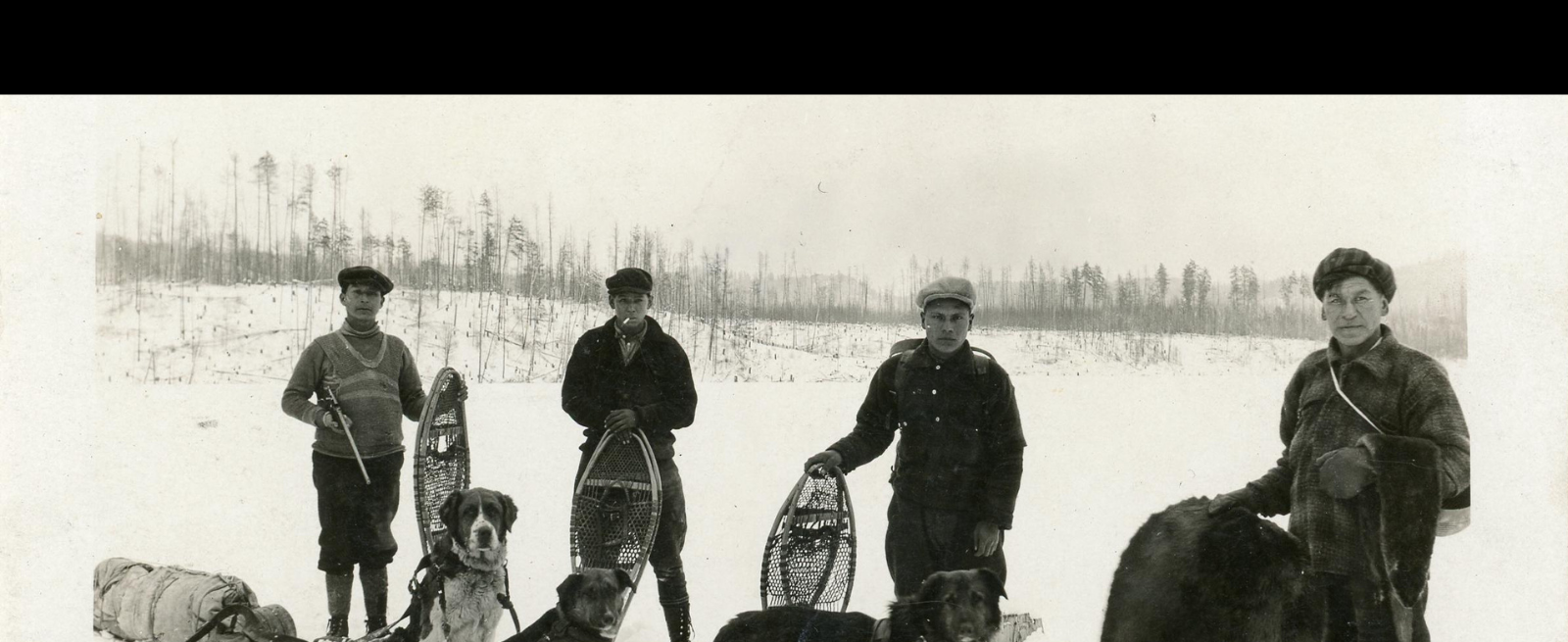The Town of Blind River has a rich history of logging, mining and fur trading. Learn about our Indigenous history and how our present-day industries have developed.
Visit the Timber Village Museum to learn more about Blind River's logging and lumbering history.
Anishnawbe beginnings
Thousands of years ago, migrant family groups followed the 320 km Mississagi River in search of food and shelter. Their stays were not long, and they moved on as the seasons and the hunt changed. The richness of the land, the river and the moderate climate of the North Channel always brought them back. The Mississagi River was rich in sturgeon and provided the Ojibway (known as 'Anishnawbe') access to Algoma's hinterland.
1600s: First European contact
The Anishnawbe made contact with the first Europeans in the 1600s. During this time, Samuel de Champlain and his followers prospected for “shiny” metal and furs. The European explorers' quest led them to discover Lake Huron and the North Channel, which later became renown as part of the voyageur route. French fur traders, loggers and miners followed to seek the vast wealth of natural resources of the North Channel.
1789: Fur trading and naming of Blind River
A fur trading post was established by the Northwest Company in 1789 at the mouth of the Mississagi River. When the fur trade began to slow down around 1820, the Hudson's Bay Company purchased the Northwest Company. A number of trappers settled along the banks of the rivers flowing into Lake Huron.
One of these rivers, just three miles east of the Mississagi mouth, was called “Penewobecong” which translates to “Smooth Rock or Sloping”. The voyageurs named this river the Blind River because the mouth was not visible as they followed along the canoe route. The name was adopted by the settlement that grew at the mouth of the river.
Mid-1800s: Start of the logging industry
The logging industry developed because of the easy access to timber along the Blind River and Mississagi watersheds. This industry was spurred on by a copper discovery in the mid-1800s in Bruce Mines, as a sawmill was built to provide timber and planks for the copper mine. The sawmill was built beside the mouth of the Blind River near the current site of the Old Mill Motel. The protected estuary of the east arm of the Blind River, as well as the deep water offshore, offered a good location for the mill.
1906: Town incorporation
In 1906, Blind River was incorporated as a Town. A second larger sawmill was built on the west arm of the Blind River. Today, the west arm is the location of the Blind River Marine Park and the Timber Village Museum.
1929: McFadden Lumber Company sawmill
In 1929, the Carpenter Hixon Company built a state-of-the-art pine sawmill producing 89 million board feet of lumber in its first year. The mill survived under the name “McFadden Lumber Company” for over 40 years as the largest white pine sawmill east of the Rocky Mountains. It was a combination of the Great Mississauga Fire of 1948 that led to a depletion of timber and difficult economic conditions that led to the eventual closing of the mill in 1969.
1955: Uranium discovery
In 1955, Uranium was discovered near Blind River. The first Uranium mine began operation as the Pronto mine in Algoma Mills. Although its life was short-lived, it led to the discovery of the entire Blind River-Elliot Lake Uranium mining camp. In 1983, a Uranium refinery was built just west of Blind River. This uranium refinery is owned and operated by Cameco, which processes uranium concentrates from all over the world into uranium trioxide and is the largest uranium refinery in the world.
Contact Us
 Subscribe to this page
Subscribe to this page





